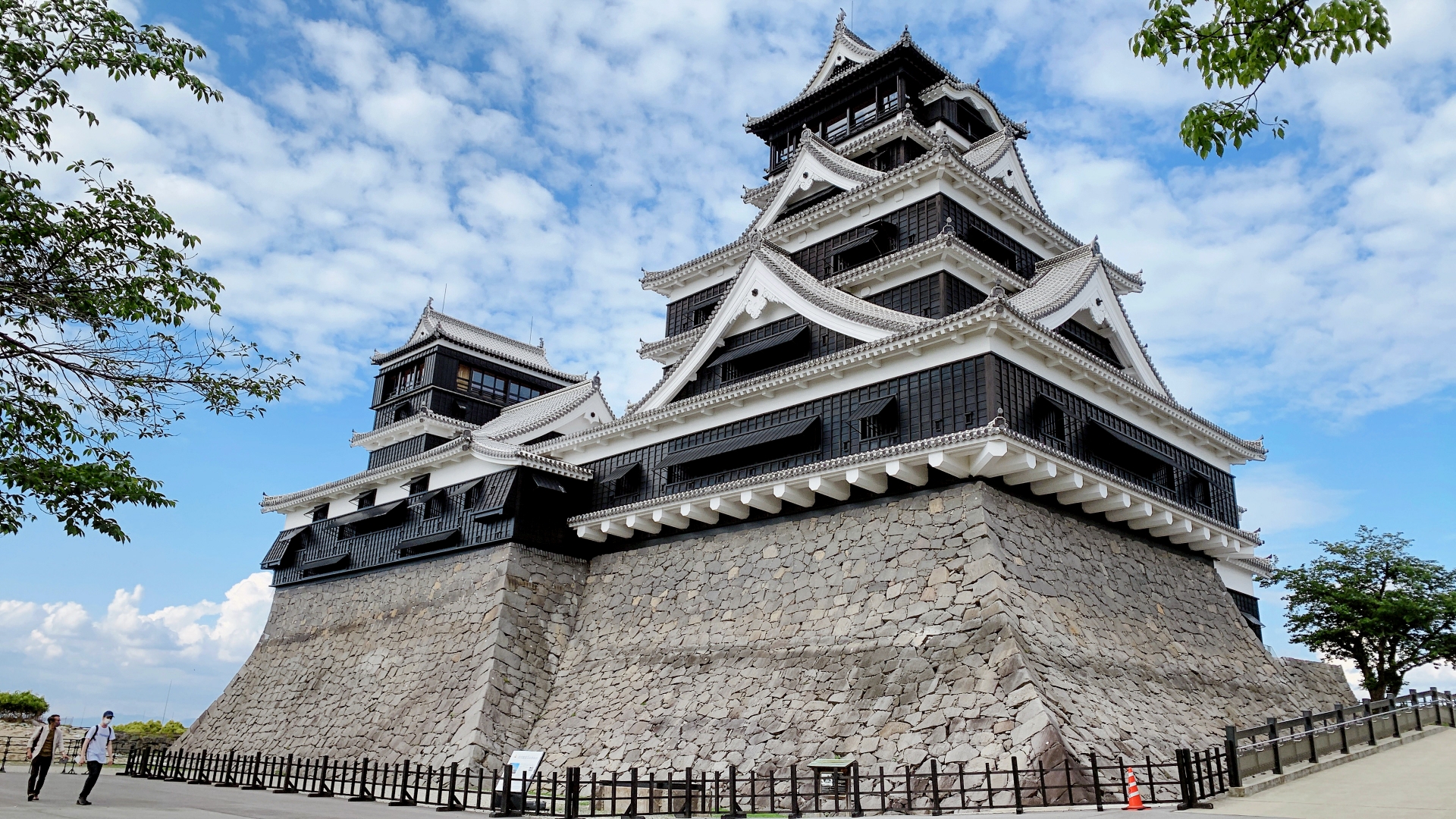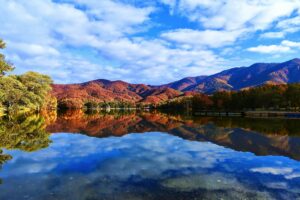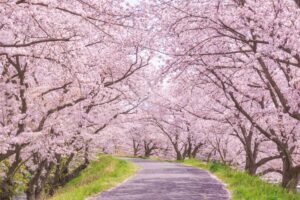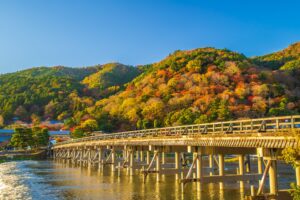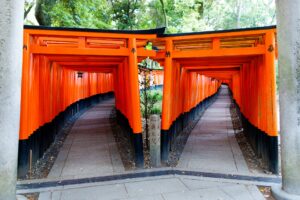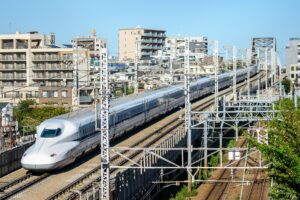Standing proudly in the heart of Kumamoto City on Japan’s southern island of Kyushu, Kumamoto Castle (熊本城) is more than just a historic landmark—it’s a living testament to Japan’s enduring spirit. Built over 400 years ago by the famed warlord Katō Kiyomasa, the fortress has withstood rebellions, fires, and devastating earthquakes, yet it continues to rise again, embodying Japan’s concept of ganbaru—perseverance through adversity.
Today, the castle serves as both a cultural treasure and a symbol of recovery, especially after the 2016 Kumamoto Earthquake that severely damaged its structure. Visitors can witness a rare sight: a national icon being carefully restored in real time. Beyond its black-and-white towers and elegant roofs, Kumamoto Castle offers a journey through Japan’s feudal past and its modern-day resilience, surrounded by cherry blossoms, traditional markets, and panoramic views of Kumamoto City.
History of Kumamoto Castle

The story of Kumamoto Castle spans more than four centuries and mirrors Japan’s turbulent transformation. Its origins date back to the Muromachi period (1467), when a small fort stood on Chausuyama Hill. In 1601, samurai general Katō Kiyomasa began constructing the fortress, completing it in 1607 after seven years of meticulous planning.
The completed castle featured 49 turrets, 29 gates, and over 100 wells, all integrated into a defensive masterpiece. Its vast grounds once covered 98 hectares, surrounded by intricately designed stone walls known for their “musha-gaeshi” (warrior-repelling curves)—a feature that would become legendary in Japanese castle design.
In 1877, during the Satsuma Rebellion, the castle was besieged by rebel forces led by Saigō Takamori. Though much of the complex burned down, the core defenses held firm, cementing Kumamoto Castle’s reputation as an “impregnable fortress.”
Over the years, the castle endured several natural disasters, most notably the 2016 earthquake, which caused extensive damage. Yet, each time, it has been rebuilt with devotion and precision—reflecting not just architectural skill but also the collective determination of Kumamoto’s people.
| Year | Event |
| 1607 | Castle completed by Katō Kiyomasa |
| 1877 | Burned during the Satsuma Rebellion |
| 1960 | Major reconstruction of the main keep |
| 2016 | Heavily damaged by Kumamoto Earthquake |
| 2021 | Main keep reopened to the public |
| 2052 | Full restoration expected to be completed |

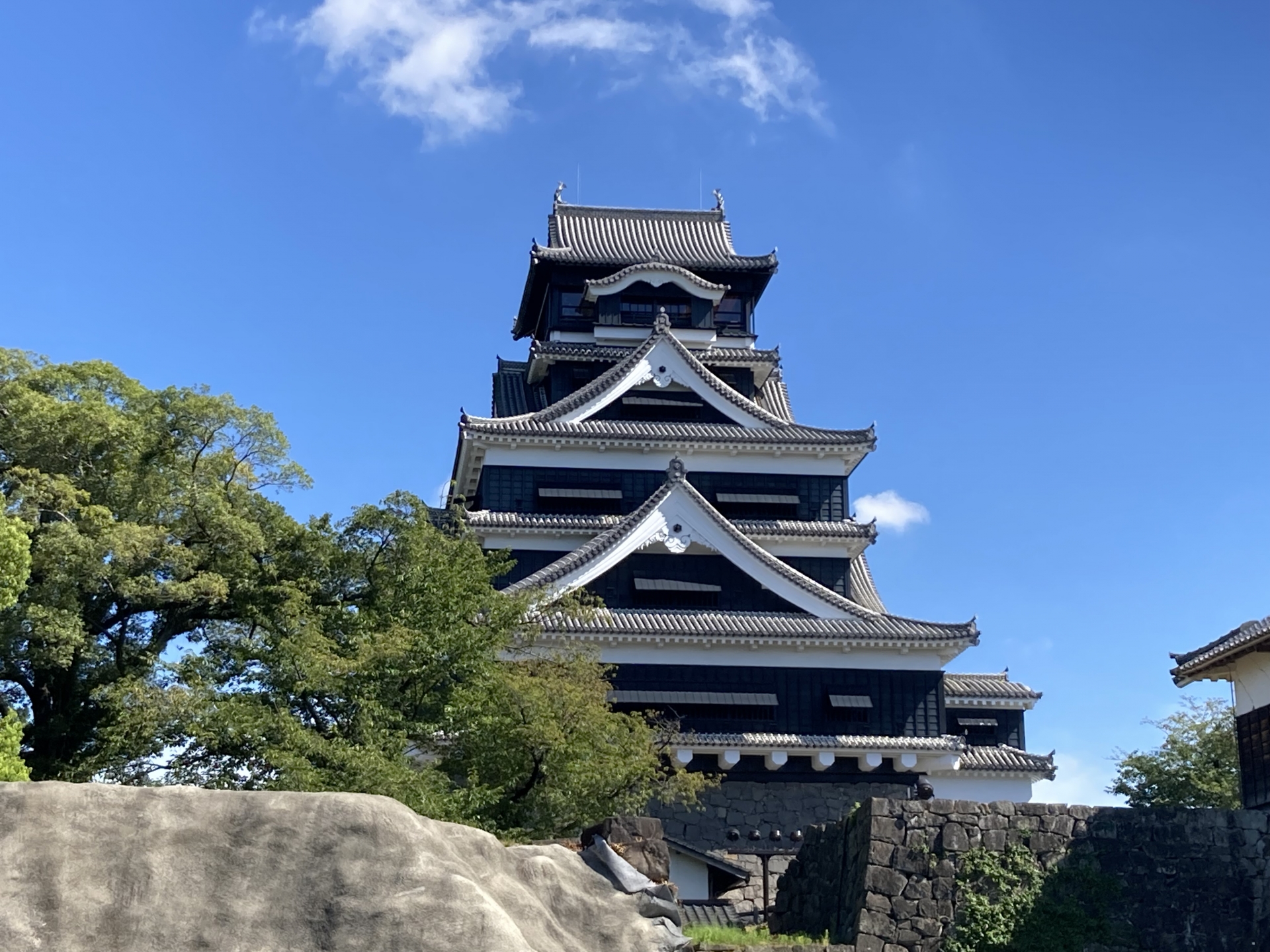
Architectural Highlights & Defensive Genius

Kumamoto Castle was once called “the fortress that could not be taken.” Its defensive design is a study in military ingenuity. The most striking feature is the musha-gaeshi—massive stone walls that curve sharply inward near the top, making them nearly impossible to climb. This architectural marvel was both functional and symbolic: strength in structure, elegance in form.
The castle’s contrasting black plaster walls and white roofs create a striking silhouette against the sky. The main keep (tenshukaku) and secondary keep (inari tenshu) combine aesthetics with functionality, featuring karahafu (curved gables) and chidori-hafu (triangular gables) that soften the fortress’s imposing profile.
Beyond its grandeur, Kumamoto Castle also incorporated thoughtful design for daily life. Its interior rooms included sophisticated layouts for storage, water supply, and communication during sieges. Many turrets had multiple escape routes and elevated vantage points for archers.
Even today, architects and historians study the castle’s unique blend of beauty and practicality. The musha-gaeshi stone walls have become a cultural symbol—one that continues to inspire engineers as Japan rebuilds the castle stone by stone.
The 2016 Earthquake and Ongoing Restoration

In April 2016, Kumamoto was hit by a series of powerful earthquakes, peaking at magnitude 7.3. The disaster caused catastrophic damage to Kumamoto Castle: over 30% of its stone walls collapsed, roof tiles shattered, and several towers, including the Uto Turret, were heavily damaged.
The images of broken ramparts and fallen shingles shocked the nation—but they also sparked a collective determination to rebuild. The restoration project officially began in 2017, led by national and local experts in historical preservation.
By 2021, after five years of painstaking work, the main keep was restored and reopened to the public, featuring a modern, earthquake-resistant structure hidden within its historical exterior. Visitors today can view detailed exhibits on the reconstruction process, including original stones, wooden beams, and digital reconstructions of damaged areas.
Full restoration of all cultural properties, including 13 designated Important Cultural Assets, is scheduled for completion around 2052. Until then, the site remains partially open, allowing visitors to observe the rebuilding in progress—a unique opportunity to witness Japanese craftsmanship and cultural resilience firsthand.
Visiting Today: Practical Travel Guide
For travelers, Kumamoto Castle is a must-see destination that’s both accessible and enriching.
Access:
From JR Kumamoto Station, take the Kumamoto City Tram to Kumamotojō / Shiyakusho-mae (about 15 minutes). The castle entrance is a short 5-minute walk from the stop.
Opening Hours:
9:00 AM – 5:00 PM (last entry 4:30 PM). Closed from December 29–31.
Admission:
- Adults (High school & above): ¥800
- Children (Elementary & Junior High): ¥300
- Preschoolers: Free
Accessibility:
Kumamoto Castle has made significant progress in barrier-free design since its reopening. Paved walkways, ramps, and elevators provide access to the main areas, while staff assist with wheelchair navigation at steeper sections. Families with strollers will also find designated routes that connect the main gate, keeps, and the nearby Sakuranobaba Josaien area.
Best Season – Cherry Blossoms:
From late March to early April, nearly 800 cherry trees bloom across the castle grounds. The night-time illumination, with the black castle walls glowing beneath pink petals, creates one of Japan’s most magical spring scenes—recognized among Japan’s “Top 100 Cherry Blossom Spots.”
Suggested Visit Duration:
2–3 hours for the main castle area; 4 hours if including Josaien and nearby shrines.
Why Kumamoto Castle Belongs on Your Japan Travel List
Kumamoto Castle stands proudly among Japan’s most popular and celebrated castles, admired for its grandeur, resilience, and ongoing restoration. What makes it truly special is not only its history—it’s the way that history continues to unfold.
Visitors don’t just see a castle; they witness a living restoration, a story of survival still being written. The contrast between centuries-old stones and modern scaffolding creates a profound visual metaphor for Japan’s balance of tradition and progress.
Five Things You’ll Remember:
- Towering stone walls and ingenious musha-gaeshi curves
- Breathtaking panoramic view from the main keep
- Cherry blossoms glowing against the black fortress
- Watching artisans restore history, stone by stone
- Tasting local specialties in the castle town below
In every season, Kumamoto Castle reflects the spirit of Kyushu—strong, welcoming, and deeply proud of its roots.
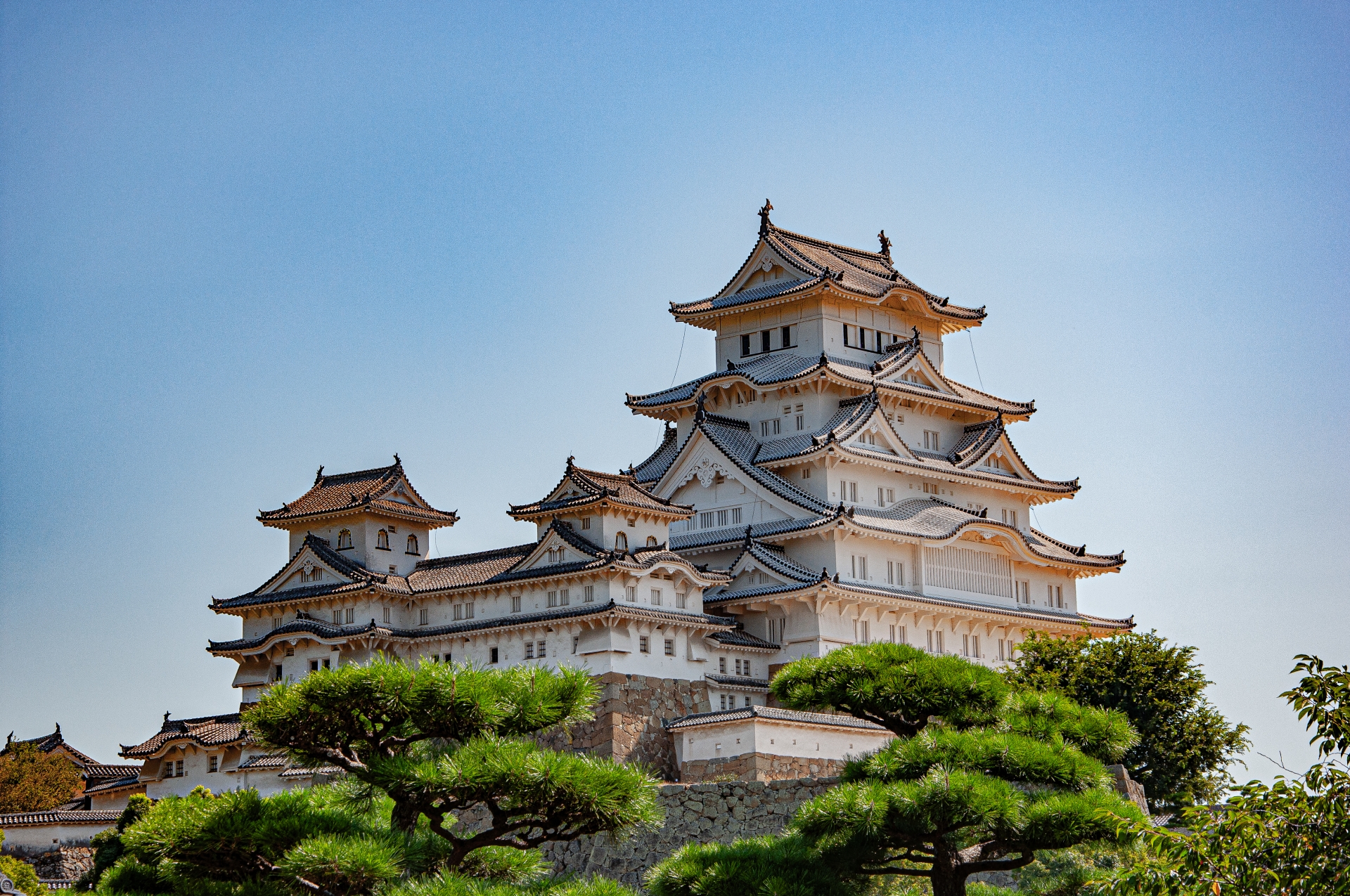
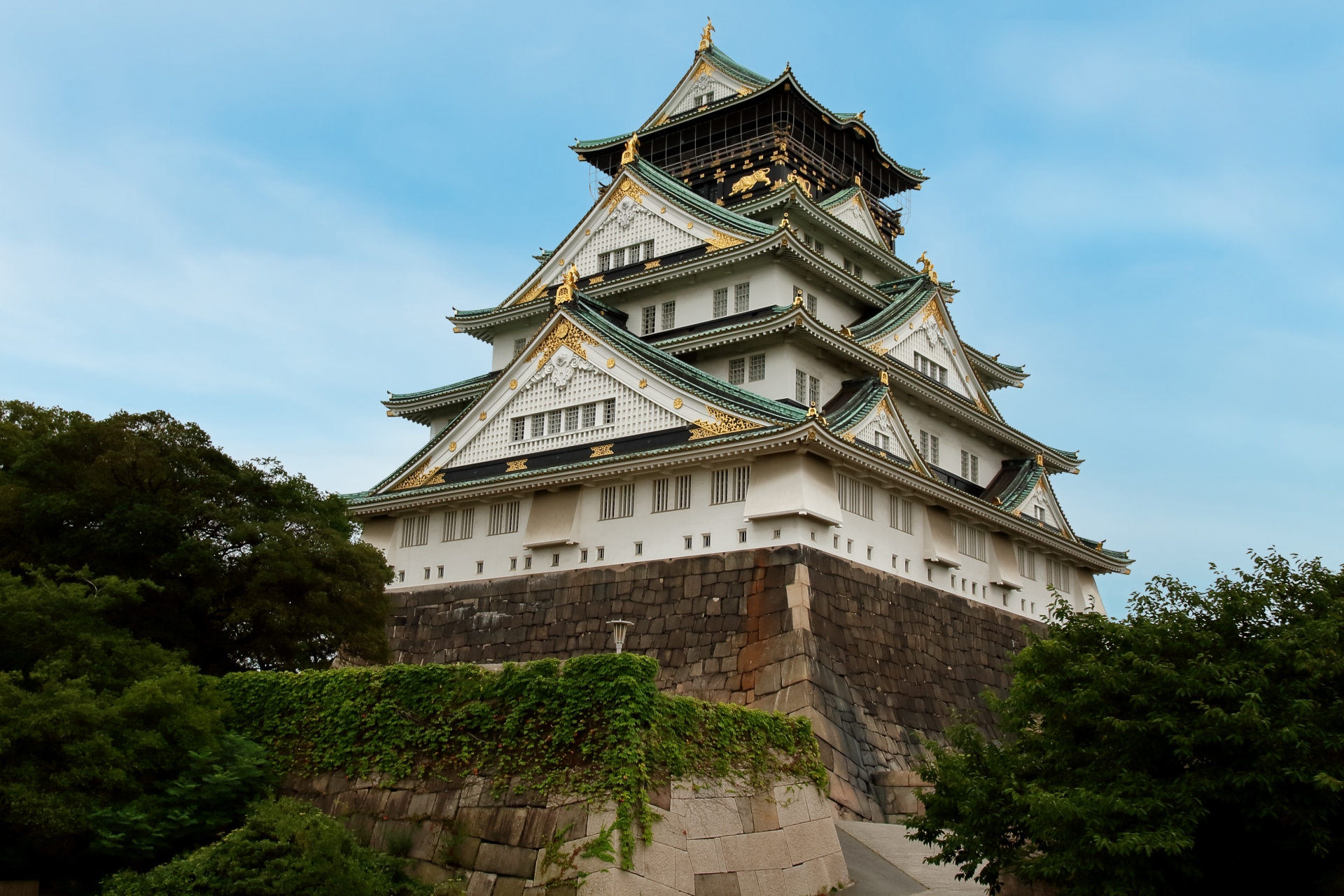

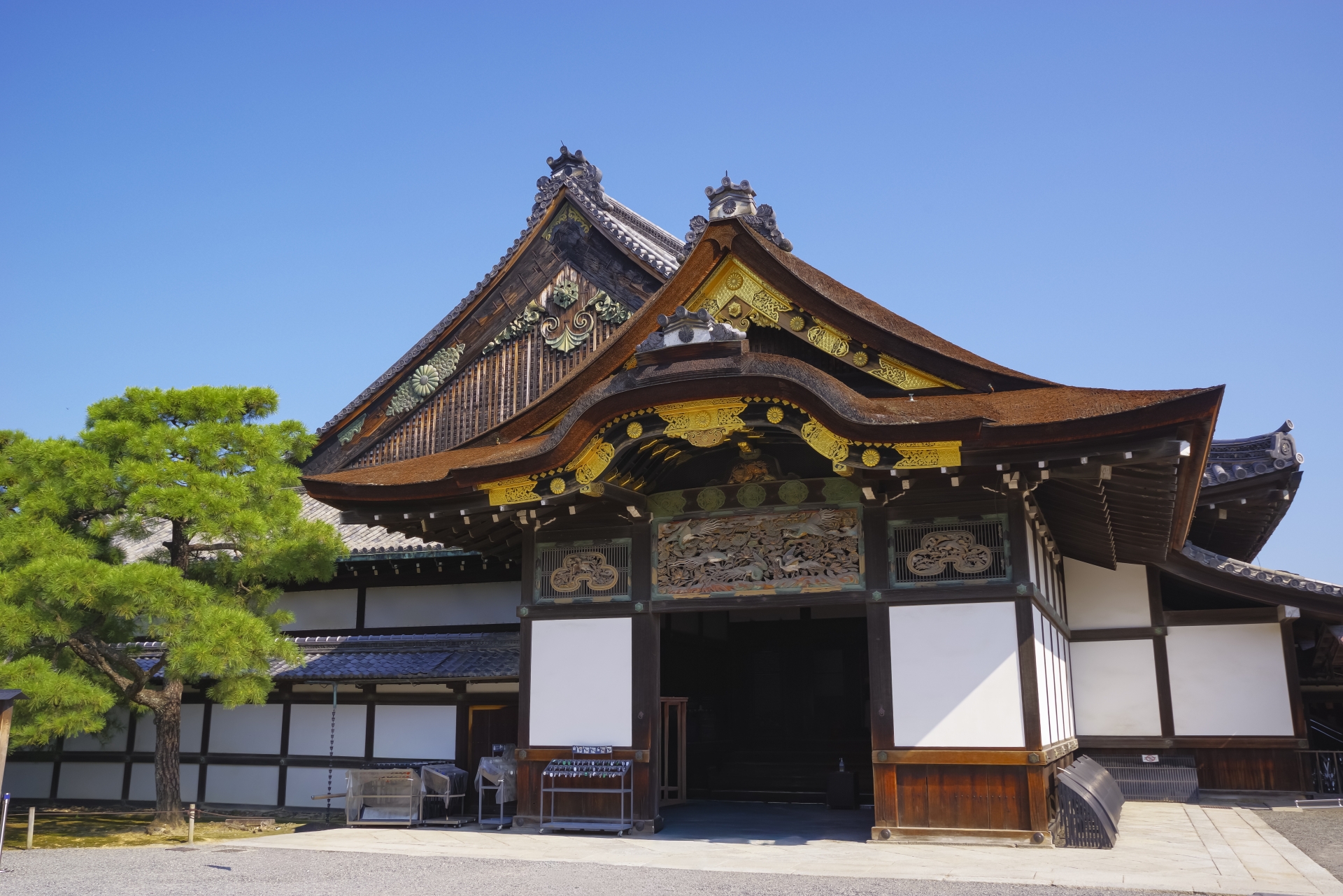
Nearby Attractions & Local Flavors
After exploring the castle, immerse yourself in the charm of the surrounding area. Just beyond the gates lies Sakuranobaba Josaien, a lively castle-town district reconstructed in Edo-period style. Here, visitors can sample local dishes, shop for crafts, and enjoy traditional performances.
Local Foods to Try:
- Basashi (horse sashimi): A Kumamoto delicacy, tender and served with soy sauce and ginger.
- Karashi Renkon: Lotus root filled with spicy mustard miso.
- Kumamoto Ramen: Thick noodles in a rich pork broth with garlic chips.
Nearby Attractions:
- Katō Shrine: Dedicated to the castle’s founder, offering the best elevated view of the fortress.
- Suizenji Garden: A beautiful strolling garden representing Japan’s 53 Tōkaidō stations.
- Kumamoto City Museum of Contemporary Art: A short tram ride away, blending modern creativity with the city’s heritage.
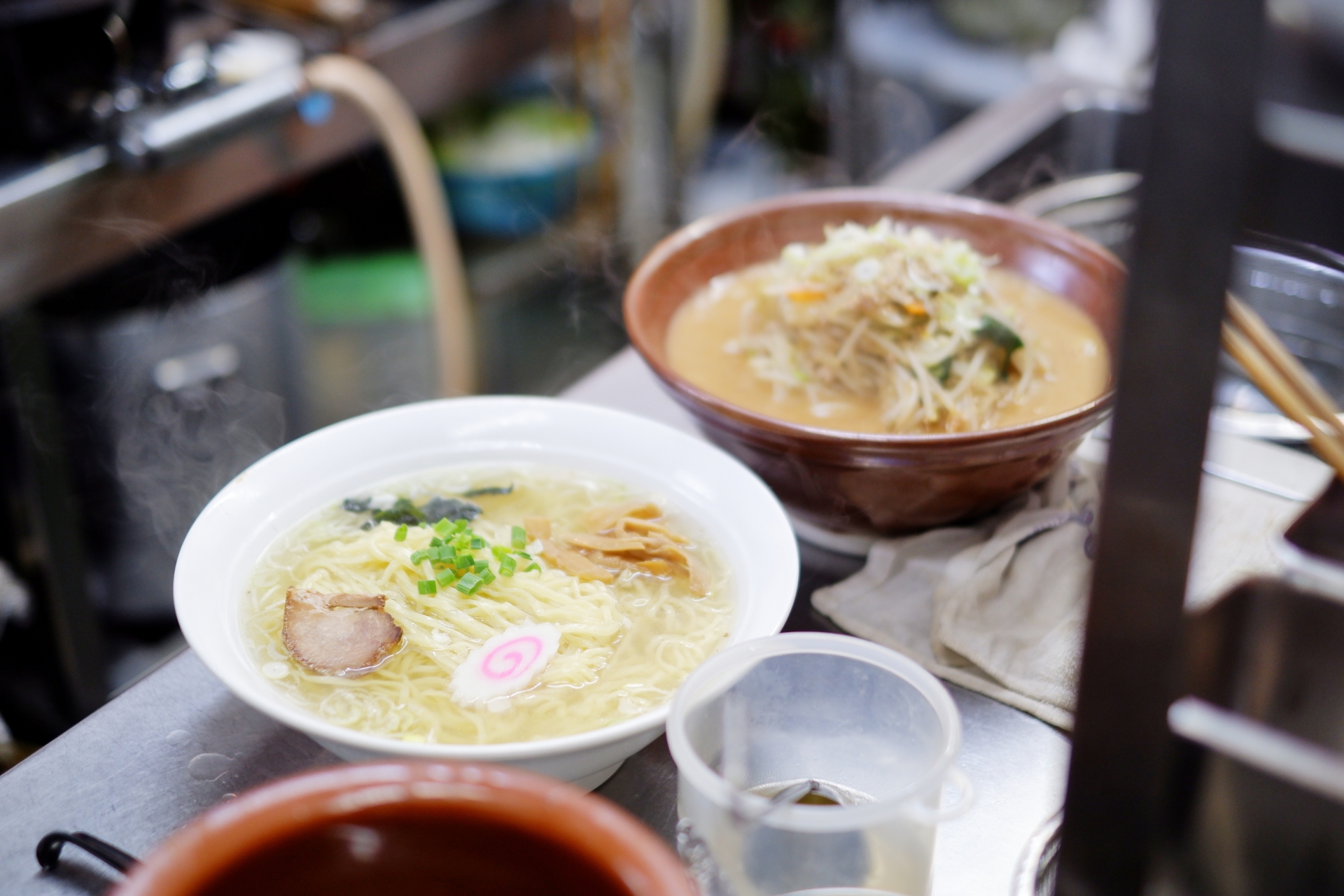

Conclusion
Kumamoto Castle is not simply a monument of stone and timber—it is a living symbol of Japan’s strength, beauty, and rebirth. Through centuries of battles, fires, and earthquakes, it continues to stand tall, reminding visitors of Japan’s unbreakable spirit.
As of 2025, the full restoration remains underway, with completion projected by 2052, but that makes the present moment especially meaningful. Witnessing the ongoing reconstruction allows travelers to engage with living history—to see heritage not as something static, but as something continuously reborn.
In spring, when the cherry blossoms paint the air pink around the black fortress, Kumamoto Castle becomes a perfect reflection of Japan itself: delicate yet enduring, ancient yet alive. When you visit Kyushu, don’t just see Kumamoto Castle—feel its story of survival and renewal.

